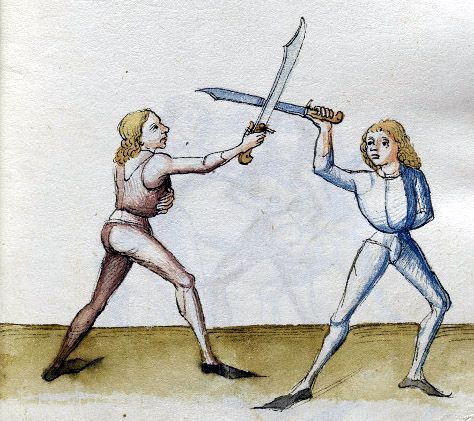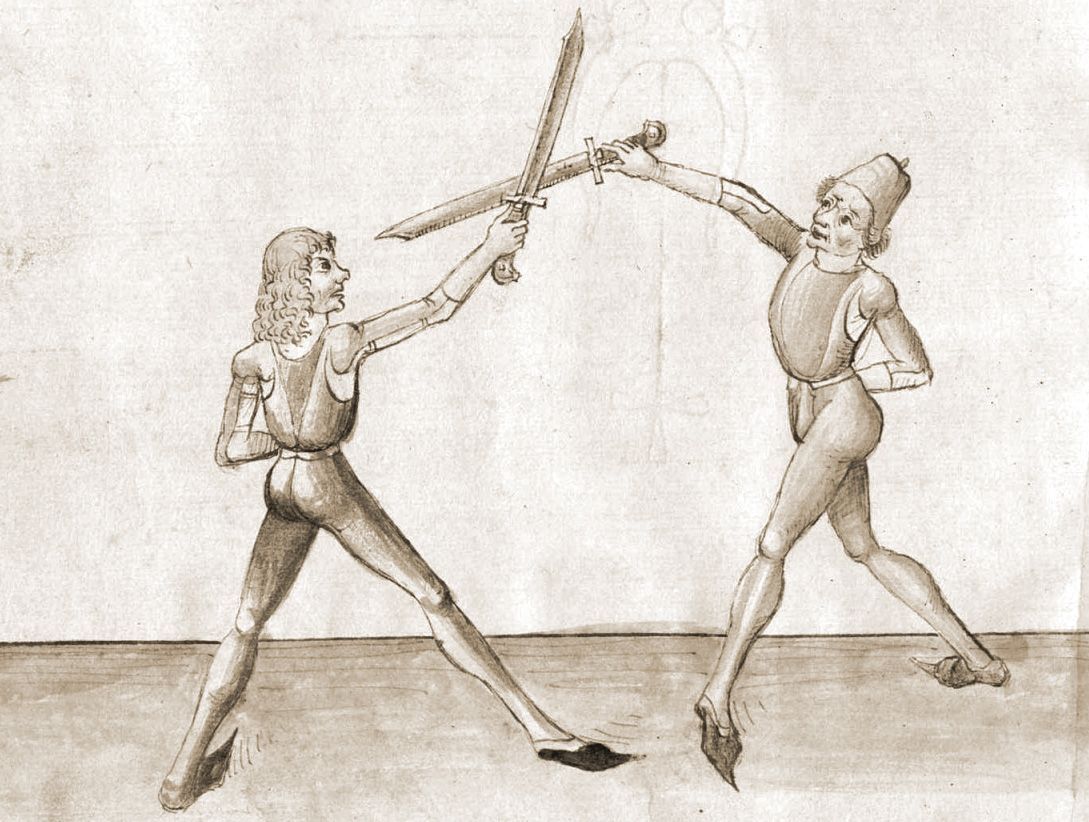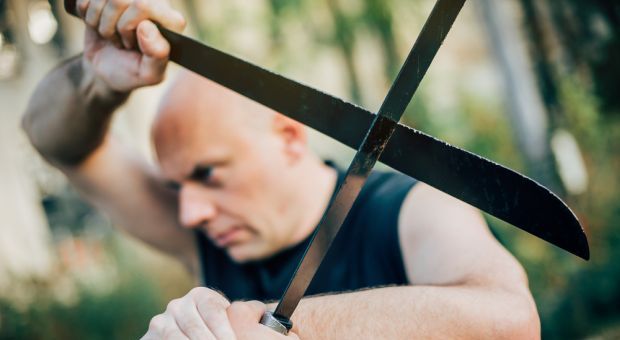Flying Crane
Sr. Grandmaster
This can be difficult to discuss adequately in an Internet forum.Sure thing. Yeah, for many of the techniques, trying to turn the hand holding the weapon so that the flat is presented would be both awkward and extremely week. Take, for example, the first:

Grab your Doa and step into this position then, with the edge aligned with your knuckles, try to turn the hand so that the impact of the opponent's blade hits the flat of your sword. If if you pronate your hand so that the back of the hand is forward in order to deflect with the flat on the outside line, then you end up pointing your elbow at the opponent and extending the elbow past the protection of the blade parry. If you supinate the hand, and face the "palm" upward in order to deflect with the flat on the inside line, then you've bent your hand at a 90 degree outward from the wrist and have no strength in the hold.
On the other hand, if you allow the edge to lead, such as a parry in Sixte, or in a sort of sixte where the point is directed more at the attacker, then you get a strong parry with sufficient bio-mechanical strength to counter very powerful attacks.

[Standard parry in Sixte]

[Hutton's parry in sixte]
I've done steel-to-steel drills this way. Edge engagement works and keeps you safe. Trying to defend with the flat is suicide.
Or take the following example (the second one I posted).

From this example the only possible "flat" parry is with the hand pronated (leading with the back of the hand) and parrying with flat on the outside line of the blade (which is turned over). Again, grab your Doa, point it at the floor, then turn it so that your palm is down and the back of your hand is up, the raise it sharply to intersect an incoming attack (to simplify the movement a tad). In order to get the point directed forward as in the image, you have to break your wrist line to your outside, taking an already questionable grip and making it weaker. How much confidence do you have in the power of this movement, rising with the flat?
One alternative which I've seen suggested is that the defender starts with his blade at the low right hand side of his body and sweeps it to the high left hand side, kind of "swatting" the flat as it passes by and using the momentum of the blade in movement as the parry. I've tried this. It pushes the blade directly against the weak of the thumb, disarming the defender.
So, yeah, for the examples I've shown, trying to parry flat does put the hand in an awkward and weak position. Parrying edge, while it could possibly lead to edge damage, is the only reasonable interpretation.
See any similarities?

How to survive a machete attack

Peace favor your sword,
Kirk
In those drawings, you are assuming the man on the left attacks, and the man on the right defends?
If so, I think I see your point. The wrist position of Right can defend off the edge from that position. To try and deflect off the side would require additional twisting of the wrist, which would become awkward. Is that what you are saying?
If we turn this around and make Right the attacker, his stance would change and he would extend forward more, but would attack with a rising cut, Left could defend with a downward motion that glances the two blades along their sides, avoiding the edge-on-edge impact. That would require no contortions in the wrist or grip. The defending motion would be very nearly identical to a downward cut, just slightly angled to deflect the side of the attackers blade off the side of defenders blade as the two blades sweep past each other.
I think my position would be that some circumstances make avoiding the edge-on-edge impact easy and natural, while others do not. When In battle, don’t worry about preserving the edge. But I would not say that either way is absolute. Like most things in life, it depends.
